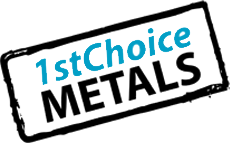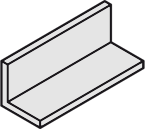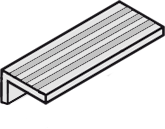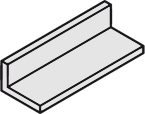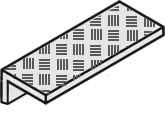What are aluminium angle and channels?
Both of these products fall under the category of ‘Aluminium Extrusions’ due to the method of production. Aluminium Angles are an “L” shaped extrusion and these are further categorised as either Equal Angles or Unequal angles. Aluminium Channels are a “U” shaped extrusion. These are designated by the Base Width x Leg (The 2 verticals) length.
Aluminium is used in a large array of commercial applications. Aluminium is used predominantly for its ductility and high level of corrosion resistance. Aluminium angles and channels have several different applications depending on the specific type used. Another reason why aluminium is used is that it has a very good weight to strength ratio. The Angles are lighter than steel but still strong enough to be used in construction.
What are aluminium angle and channels used for?
There a several different shaped aluminium angles and channels and each one has a different application. They can be used to cap off another component to offer protection, to make it safer or to make it look better. They are also used in the production of building frames, and Aluminium Channels especially can be used as housing or track to support and retain another component or material that slides along inside of it – for example a sliding door.
Fabrication
Aluminium Angles & Channels are often used in fabrication shops. They have many attributes that make them perfect for fabrication jobs. They can be welded, drilled, tapped, grade dependant they can be cold formed, they are easy to cut and being much lighter they are far easier to work with than steel.
Once the fabrication processes are complete, they are also suitable for a range of finishes such as polishing, powder coating or anodising.
Boat Building
Whilst Aluminium has a high corrosion resistance; long exposure to saltwater will still cause non marine grades of aluminium to deteriorate.
What aluminium angle and channels does 1st Choice Metals offer?
Aluminium channel
The most common shape used for an aluminium channel is a U shape. It is used to fit over another piece to cap it off or keep it secure. Aluminium channels are predominantly used to secure glass or Perspex windows.
Aluminium equal angle
Shaped like the letter L, the aluminium equal angle is used due to its versatility of application. They can be used to build frames and joinery, like in shop fitting and engineering. They are also used widely in the commercial long body vehicle industry.
Aluminium unequal angle
The same as an equal angle, the aluminium unequal angle is used in joinery, frames and brackets. The major difference is that one side of the L shape is longer than the other.
Aluminium J gutters
Aluminium J angles are used on commercial vehicles as gutters, these are predominantly J shaped. They have also been used in DIY settings for edging and even housing LED lights!
Aluminium nosing
You most likely have seen aluminium nosing on the exposed joining edges on commercial steps. Due to the high level of foot traffic that stairs see in setting such as warehouses, office blocks and public buildings, aluminium nosing offers a durable and safer option. The castellated pattern that runs along the larger surface is designed to offer more grip.
Chequer plate angles
Used in places such as warehouses, and supermarket store rooms, chequer plate angles help protect corners of buildings and supporting columns from damage caused by pallet trucks, trolleys and forklift trucks.
Who might use aluminium angle and channels?
Shopfitting companies and Exhibition companies are major users of Aluminium Angles & Channels. There are also many other uses for aluminium angles and channels; they are used in heavy duty settings such as construction. Due to their incredible resistance to different substances, aluminium can withstand weathering and the elements while also being strong and light so is often a cost effective alternative to timber in outdoor applications. The material is relatively cheap and easy to manipulate to almost any purpose. Sometimes it helps to get an opinion on which angle or channel you may need, contact us today to get advice on your project!
